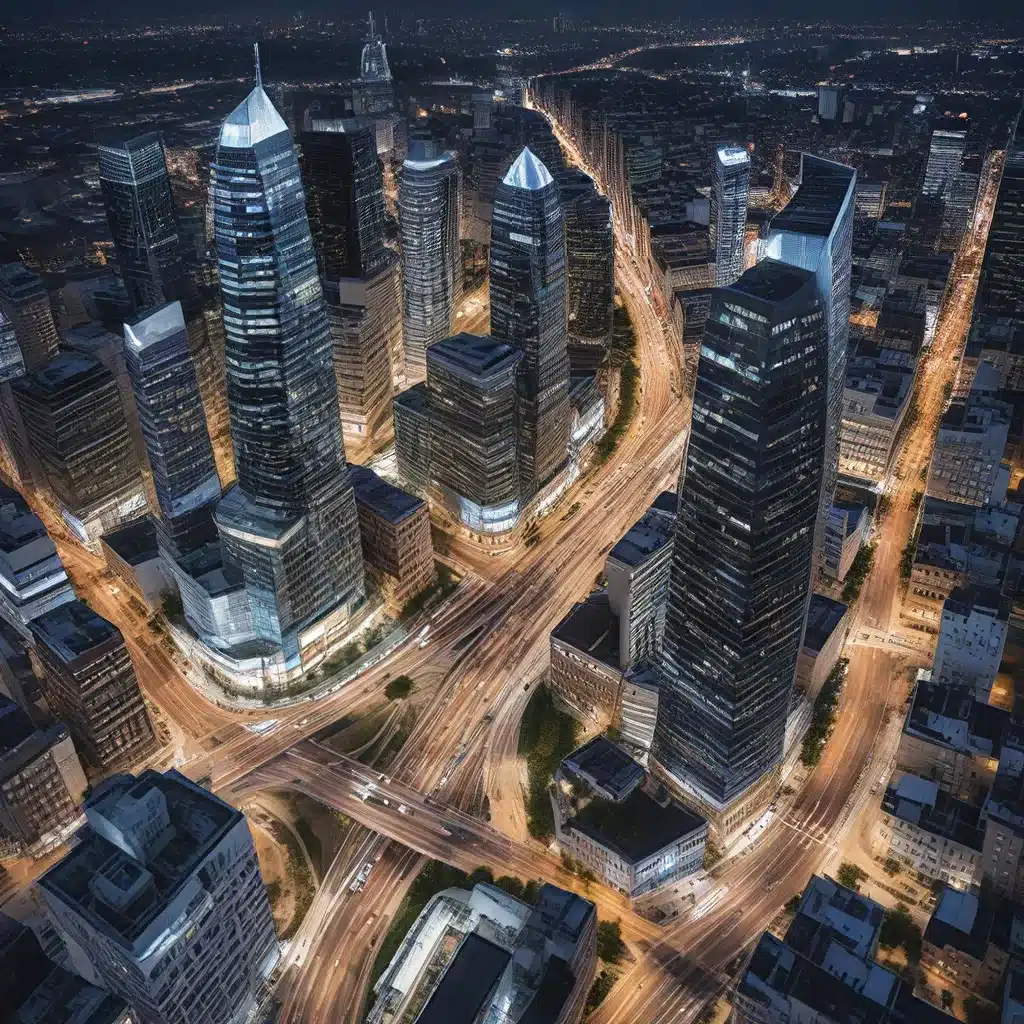
The Rise of IoT and Smart City Technologies
The rapid advancement of Internet of Things (IoT) technology has paved the way for the development of smart cities, where a network of interconnected sensors and devices work together to improve the efficiency and livability of urban environments. These sensor networks, embedded throughout the infrastructure, gather vast amounts of data that can be leveraged to optimize city operations, enhance public services, and address pressing challenges such as traffic congestion, energy consumption, and environmental sustainability.
At the heart of this transformation are distributed algorithms, which play a crucial role in coordinating the complex web of IoT devices and managing the flow of data within smart city ecosystems. By employing decentralized decision-making processes, these algorithms enable real-time responsiveness, adaptability, and fault tolerance – essential qualities for managing the dynamic and ever-changing conditions of modern urban centers.
Optimizing Urban Mobility with IoT-Driven Traffic Management
One of the most visible applications of IoT and distributed algorithms in smart cities is the optimization of urban mobility. Traffic congestion has long been a persistent problem in many urban areas, leading to increased travel times, air pollution, and economic losses. IoT-enabled traffic management systems, powered by distributed algorithms, are addressing this challenge head-on.
Sensor networks deployed across city streets, highways, and public transportation hubs collect real-time data on traffic patterns, vehicle movements, and passenger flow. This information is then fed into distributed algorithms that can dynamically adjust traffic signals, reroute vehicles, and provide personalized navigation recommendations to drivers and commuters. By constantly monitoring and adapting to changing conditions, these systems can significantly reduce travel times, lower fuel consumption, and improve the overall efficiency of urban transportation.
Moreover, the integration of connected vehicles and autonomous driving technologies with smart city infrastructure further enhances the capabilities of distributed algorithms in traffic management. These advanced systems can anticipate and respond to potential congestion or incidents, coordinating the movement of vehicles to maintain smooth traffic flow and minimize disruptions.
Enhancing Energy Efficiency and Sustainability with Distributed Algorithms
Another crucial area where IoT and distributed algorithms are transforming smart cities is energy management and sustainability. Sensor networks deployed throughout urban environments can track energy consumption, water usage, and emissions from various sources, including buildings, transportation, and public utilities.
Distributed algorithms can then analyze this data, identify patterns and inefficiencies, and implement automated control systems to optimize resource consumption. This can include adjusting lighting, HVAC, and other building systems based on occupancy and weather conditions, as well as coordinating the integration of renewable energy sources and energy storage solutions to enhance the overall sustainability of the urban infrastructure.
Furthermore, these algorithms can extend their reach to waste management and water conservation, using sensor data to optimize collection routes, monitor water quality, and detect leaks or other issues in real-time. By empowering cities to make data-driven decisions and implement adaptive control measures, distributed algorithms play a pivotal role in driving the transition towards more eco-friendly and resource-efficient smart cities.
Ensuring Robust Security and Privacy in IoT-Enabled Smart Cities
As the reliance on IoT technologies and distributed algorithms in smart cities continues to grow, the importance of robust security and privacy safeguards becomes increasingly paramount. Cyberattacks, data breaches, and unauthorized access to critical infrastructure can have severe consequences, ranging from disruptions to public services to potential threats to public safety and national security.
Distributed algorithms can play a crucial role in enhancing the security of smart city systems by implementing decentralized authentication, authorization, and access control mechanisms. These algorithms can continuously monitor network activity, detect anomalies, and respond to potential threats in a timely manner, mitigating the impact of cyber incidents and protecting the sensitive data collected by IoT devices.
Moreover, the use of blockchain technology and distributed ledgers in conjunction with IoT and distributed algorithms can further strengthen the security and transparency of smart city operations. By storing and verifying data across a decentralized network, these technologies can ensure the integrity and traceability of critical information, reducing the risk of tampering or unauthorized modifications.
The Future of Distributed Algorithms in Smart Cities
As the world continues to urbanize, the role of distributed algorithms in the development of IoT-enabled smart cities will only become more crucial. These advanced algorithms will be at the forefront of managing the complexities of modern urban environments, optimizing the flow of people, resources, and data to create more livable, sustainable, and resilient cities.
Looking ahead, we can expect to see continued advancements in areas such as predictive analytics, edge computing, and autonomous decision-making, further empowering distributed algorithms to anticipate and respond to the ever-evolving needs of smart city residents and stakeholders. By seamlessly integrating these technologies with the physical infrastructure of our cities, we can unlock new frontiers of innovation and pave the way for a more connected, efficient, and future-ready urban landscape.
Ultimately, the success of smart cities will hinge on the ability of distributed algorithms to harness the vast potential of IoT and effectively coordinate the intricate web of interconnected systems and devices. As we continue to push the boundaries of what’s possible, the path towards truly intelligent, responsive, and sustainable urban environments will be paved by the innovative power of distributed algorithms.